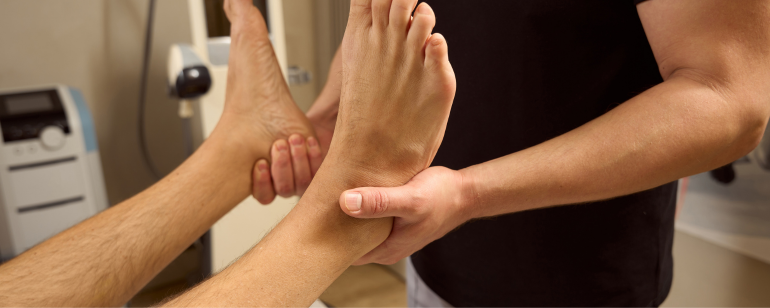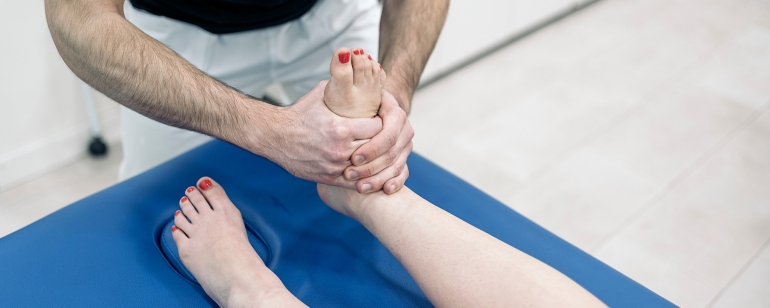You suddenly twisted your ankle while walking on uneven ground – again. A small moment of carelessness and your ankle twists sideways. What often begins harmlessly can develop into a real problem in the long term: recurring ligament sprains, instability in everyday life or even chronic pain. But there is good news: With targeted training and physiotherapeutic support, you can significantly stabilize your ankle joints.
Why do people keep bending over?
The ankle joint is a small biomechanical marvel – it supports our entire body weight, moves in several directions and adapts to a wide variety of surfaces. If you frequently twist your ankle, the problem is usually not (only) with the ligaments, but with proprioceptive control. This means that the interaction between nerves, muscles and joint movement is disturbed. After injuries or due to a lack of movement, this fine interplay is impaired – and the result is a feeling of “wobbliness” in the foot.
Acute or chronic – what is important?
After a fresh ankle twist trauma (e.g. external ligament strain), the initial focus is on relief, cooling and rest. As soon as the acute phase is over, however, it is essential to actively mobilize and specifically train the ankle joint – otherwise there is a risk of permanent instability. In the case of chronically unstable ankle joints, we work with a holistic concept in physiotherapy:
- Manual therapy to mobilize the joint structures
- Strengthening the stabilizing muscles
- Coordination and balance training
- Sensorimotor exercises, e.g. on unstable surfaces
- Gait analysis and correction of movement patterns
- Advice on suitable footwear and insoles

Three effective exercises to do at home
You can perform these three exercises yourself – ideally with prior physiotherapeutic guidance to avoid mistakes.
1st tapping exercise on one leg
Stand barefoot on one leg. Pull the free knee up slightly. Hold the position for 30 seconds. For advanced users: close your eyes or stand on a folded towel. This trains your deep sensitivity.
2. lateral band pulling
With a Theraband: Attach the band to a table leg, for example, and wrap the other end around your forefoot. Slowly pull your foot outwards against the resistance (eversion) and back again. 15 repetitions, 2-3 passes per side.
3. foot circles with resistance
Sit on a chair. Hold a slightly taut Theraband with your hand and make circular movements with your foot. This exercise strengthens the entire ankle joint muscles and promotes mobility.
What to do if it doesn’t get better?
If you continue to twist your ankle frequently despite exercises or feel unsteady when walking, it is worth having a physiotherapeutic assessment. In our practice, we combine classic methods such as manual therapy with modern training approaches – individually tailored to your body. In some cases, osteopathic diagnostics can also help to identify structural blockages or incorrect tension in the entire leg axis system.

Conclusion: Act early – profit later
The earlier you start stabilizing your ankle joint, the better you can avoid consequential damage. The good news is that your body is capable of learning. Even after repeated injuries, balance and coordination can be sustainably improved with the right training.
Would you like to improve your foot and ankle stability or need support after an ankle injury? Make an appointment with us – we’ll help you on your way to greater safety in everyday life and sport.
